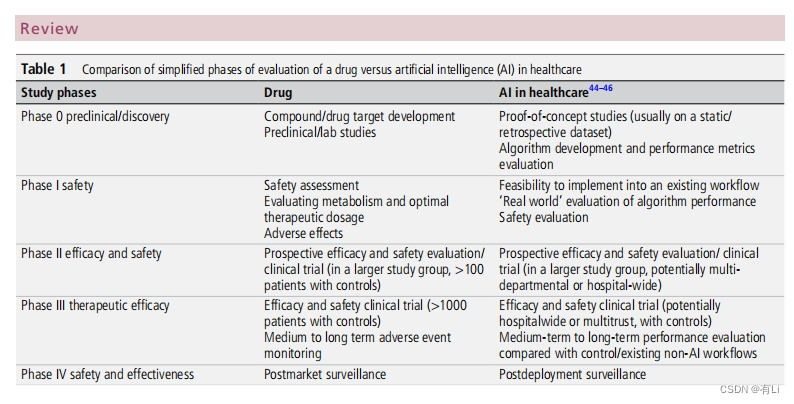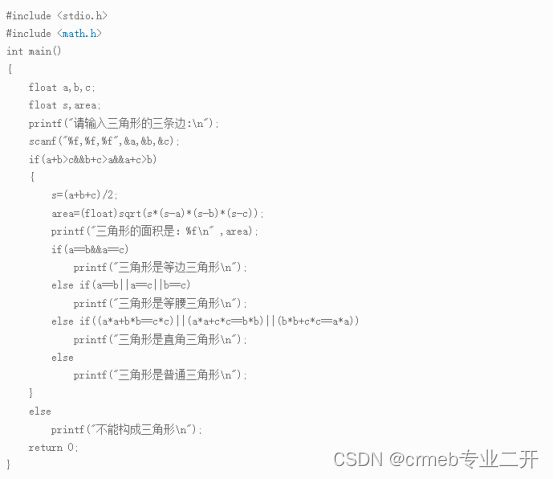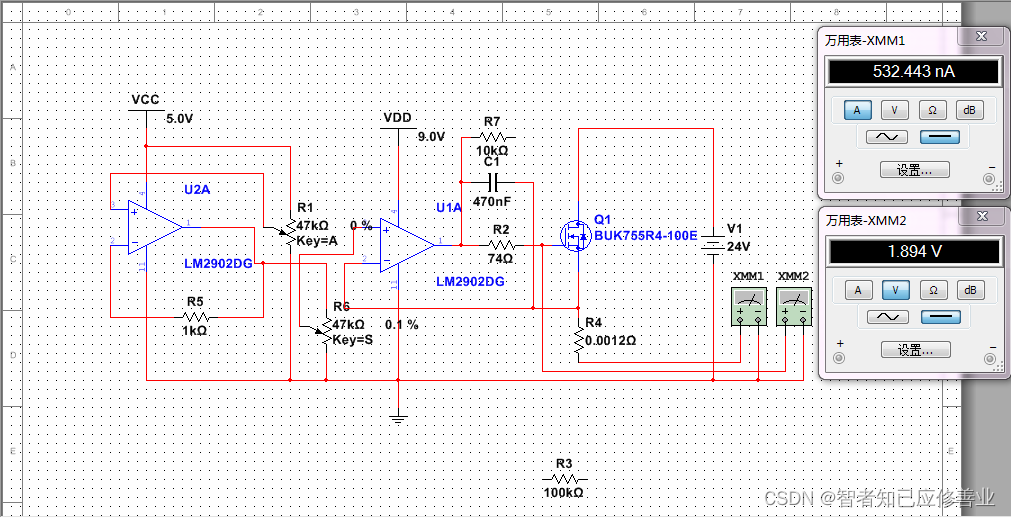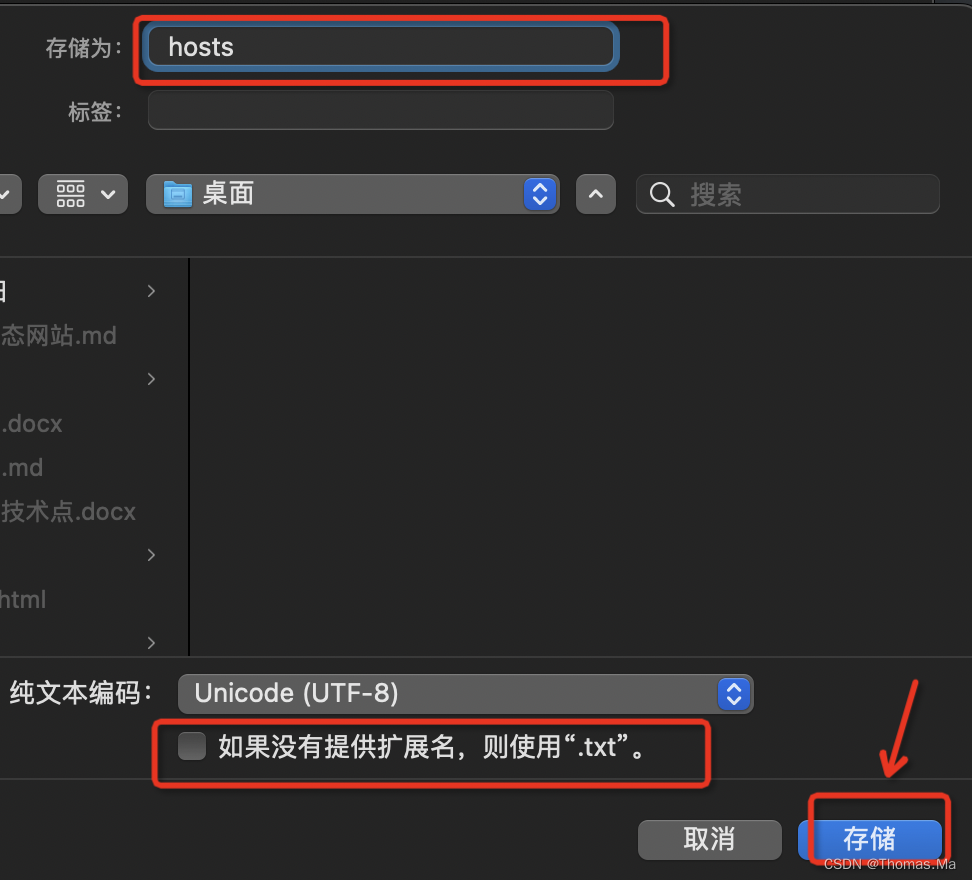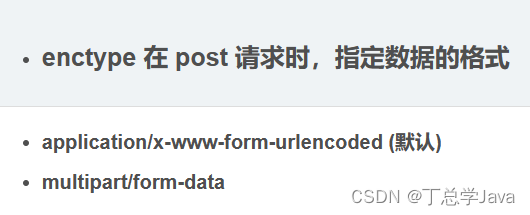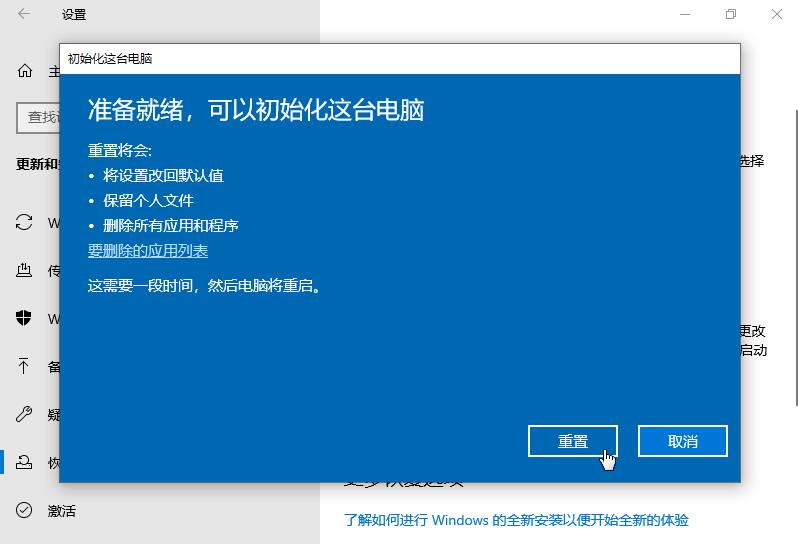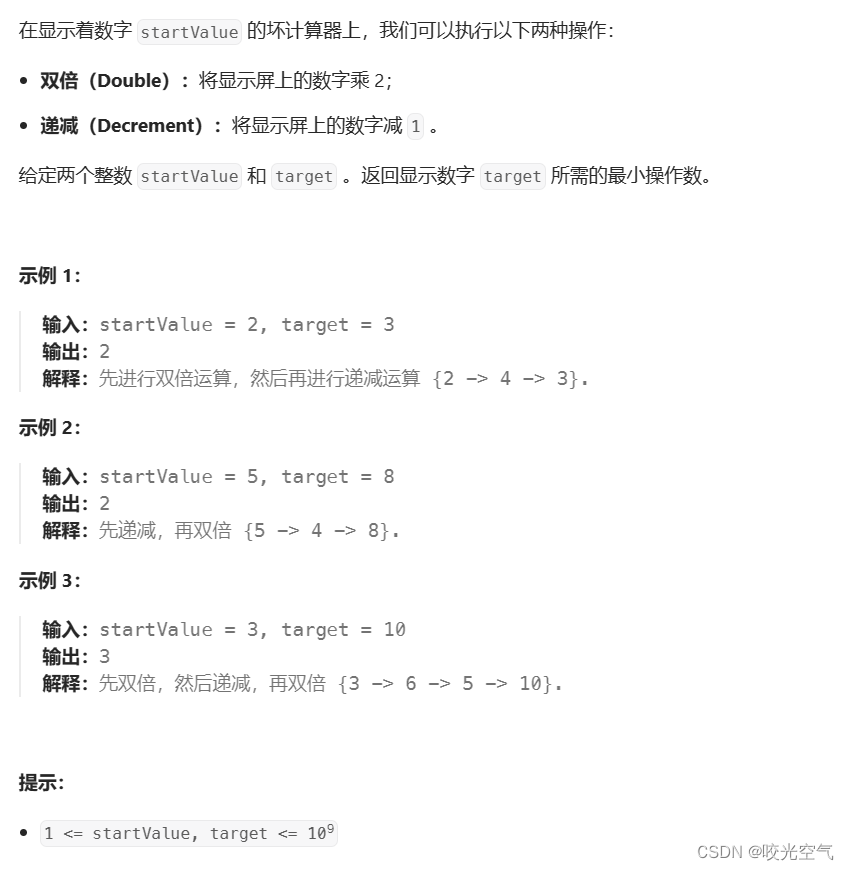这篇文章详细讨论了人工智能(AI)在神经学领域的应用及其对医疗保健行业的深远影响。主要内容可以分为以下几个部分:
**1.AI和机器学习的基础知识:**文章首先解释了AI的基本概念,回顾了从最初的基于规则的方法到当前的机器学习和深度学习技术的发展历程。强调了AI技术在处理复杂数据和自我调整反应方面的进步。
**2.AI对神经学家职业的影响:**文章探讨了社会对AI技术可能取代专业工作的担忧,特别指出虽然AI可以自动化一些任务,但由于神经学家的工作包含多种复杂活动,因此AI不太可能完全替代他们。相反,AI可能会成为神经学家工作的辅助工具。
**3.AI在神经学的具体应用:**文章详细介绍了AI在神经学中的多种应用,如卒中成像、电子健康记录分析、自然语言处理和语音分析等。这些应用显示了AI在辅助诊断和处理大量数据方面的潜力。
**4.AI算法学习的方式:**文章解释了机器学习模型的几种主要学习方法,包括监督学习、自监督学习、强化学习和深度学习,强调了这些方法在处理特定医疗问题时的适用性。
**5.机器学习与传统统计学的对比:**文章对机器学习和传统统计方法进行了对比,指出它们在目标和处理数据能力方面的区别。机器学习更适合处理大量复杂的数据,而传统统计学则在数据分析上有其局限性。
6.评估机器学习和AI模型:讨论了如何评估AI模型的有效性,包括理解模型解决的问题、评估训练数据的质量、性能评估标准和实际实施中的依赖性。
**7.AI软件的监管和实施:**探讨了将AI技术应用于医疗保健的监管要求和挑战,包括医疗设备软件的合规性和将AI集成到临床IT系统中的重要性。
8.未来挑战和方向:最后,文章讨论了AI在医疗领域面临的挑战,如数据偏见、伦理问题、保护患者数据和隐私以及AI安全性问题。强调了神经学家在采用和实施AI时的关键作用,以及他们在形塑未来AI在神经学中应用的重要性。
Title
题目
Artificial intelligence (AI) for
neurologists: do digital neurones dream of electric sheep?
人工智能(AI)用于神经学家:数字神经元会梦见电子羊吗?
Abstract-Background
摘要-背景
Artificial intelligence(AI) is routinely mentioned in journals and newspapers, and non-technical outsiders may have difficulty in distinguishing hyperbole
from reality. We present a practical guide to help non-technical neurologists to understand healthcare AI.AI is being used to support clinical decisions in treating neurological disorders. We introduce basic concepts of AI, such as machine learning and natural language processing, and explain how AI is being used in healthcare, giving examples its benefits and challenges. We also cover howAI performance is measured, and its regulatory aspects in healthcare. An important theme is that AI is a general-purpose technology like medical statistics, with broad utility applicable in various scenarios, such that niche approaches are outpaced by approaches that are broadly
applicable in many disease areas and specialties. By understanding AI basics and its potential applications, neurologists can make informed decisions when evaluating AI used in their clinical practice. This article was written byfour humans, with generative AI helping with formatting and image generation.
本文探讨了临床神经学家在采用人工智能(AI)技术时所面临的一系列问题,包括病人安全、数据治理、数据偏差以及AI模型的伦理法律意义。另外,对深度学习和生成式AI模型兴趣的增加引发了人们对正在开发的AI模型可解释性的担忧。
神经学一直处于AI创新的前沿。实践神经学家是将AI引入其专业领域的关键利益相关者,AI有可能大大改善病人护理,但这必须在安全、伦理和有责任心的前提下实施。神经学家必须了解临床AI并对即将遇到的各种AI软件的有效性、安全性和价值进行批判性评估,这至关重要。
本文旨在为非技术性神经学家提供了解医疗AI的实用指南。通过考虑讨论的因素,临床神经学家可以帮助塑造未来几十年医疗保健中AI发展和实施的方向。
Figure
图
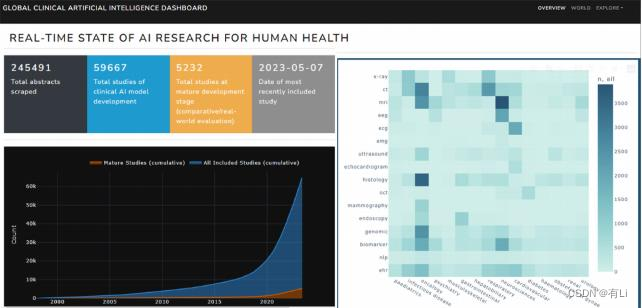
Figure 1 Exponential increase in artificial intelligence (AI)-related publications in healthcare.34 A real-time dashboard using natural
language processing to determine if a research publication claims to use AI at: https://aiforhealth.app/.
图1 医疗保健中与人工智能(AI)相关的出版物呈指数增长趋势。34 使用自然语言处理的实时仪表板,用于确定研究出版物是否声称使用AI,网址:https://aiforhealth.app/.
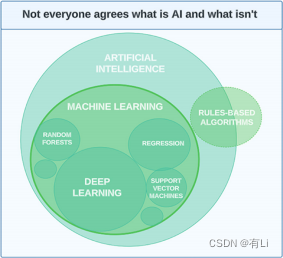
figure 2 Venn diagram interpretation of the relationship between artificial intelligence (AI), machine learning and deep learning.
图2 展示了人工智能(AI)、机器学习和深度学习之间的关系,采用了Venn图的解释方式。
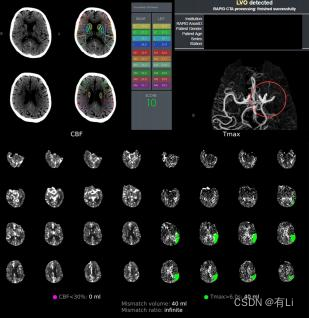
figure 3 : Screenshots of AI-generated reports ofhyperacute stroke imaging to support clinical decision-making: haemorrhage detection (upper left); ASPECTS score for early ischaemic change (bottom left); large vessel occlusion on CT- angiogram, and perfusion mismatch on CT-perfusion (right)
图3:人工智能生成的超急性卒中影像报告屏幕截图,用于支持临床决策:出血检测(左上);早期缺血性改变的ASPECTS评分(左下);CT血管造影显示大血管闭塞,CT灌注不匹配(右!)。
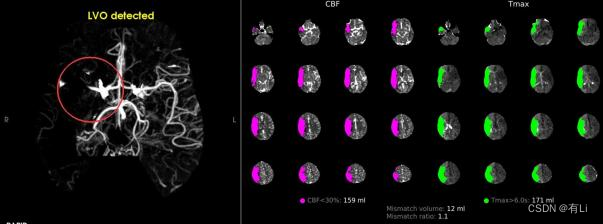
figure 4 : AI-generated segmentation of right middle cerebral
artery large vessel occlusion with associated large coreand minimal penumbra, indicative of little salvageable tissue
图 4:人工智能生成的右侧中大脑动脉大血管闭塞及其相关的大核心和最小半暗带分割,表明可挽救组织较少。
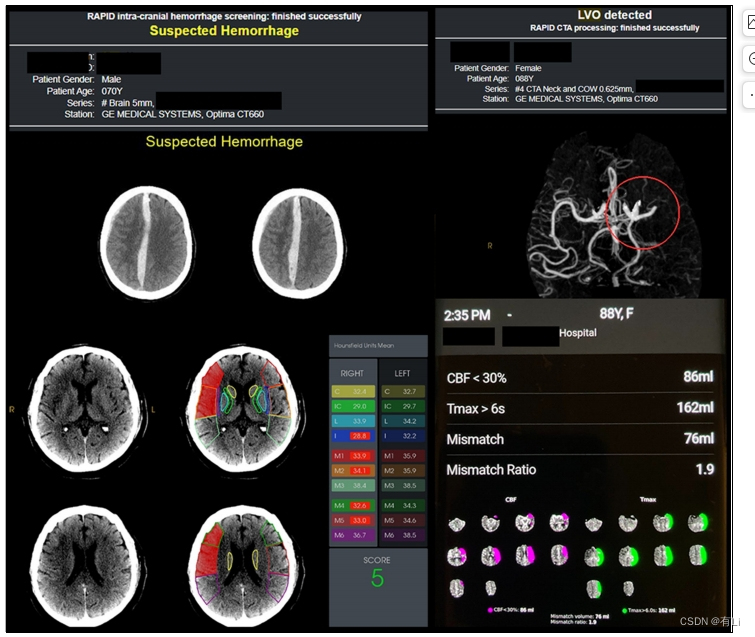
Figure 5 Screenshots of artificial intelligence (AI)-generated reports of hyperacute stroke imaging to support clinical decision-making: haemorrhage detection (upper left); ASPECTS score for early ischaemic change (bottom left); large vessel occlusion on CT
angiogram and perfusion mismatch on CT perfusion scanning (right).
图 5:人工智能(AI)生成的超急性卒中成像报告截图,用于支持临床决策:出血检测(左上角);早期缺血变化的ASPECTS评分(左下角);CT血管造影中大血管闭塞和CT灌注扫描中的灌注不匹配(右侧)。
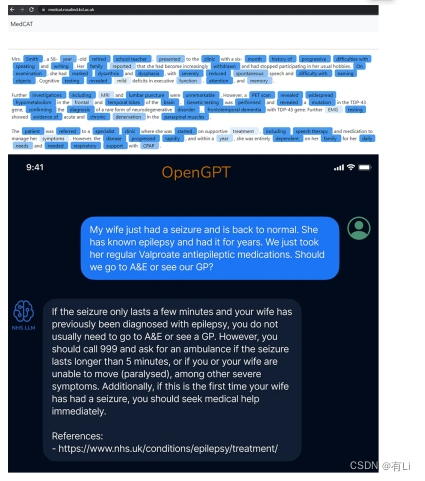
Figure 6 The use of natural language processing to detect words and phrases and to develop ability to allow computable semantics, that is, computers can read meaning (top). The
development of large language models trained on NICE guidelines and healthcare data by the authors’ team (bottom).
图 6:利用自然语言处理技术来检测词汇和短语,并发展出让计算机能够读懂含义的可计算语义技术(顶部)。作者团队基于NICE指南和医疗数据训练的大型语言模型的发展(底部)。
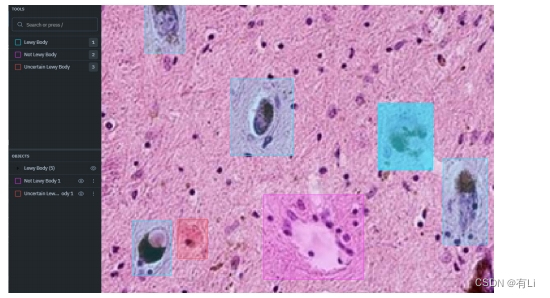
Figure 7 Example of a software tool for labelling a Lewy body, to train AI-automated labelling of Lewy bodies on central nervous
system histopathology (image produced by author).
图 7:用于标记Lewy小体的软件工具示例,以训练人工智能自动标记中枢神经系统组织病理学上的Lewy小体(作者制作的图像)。
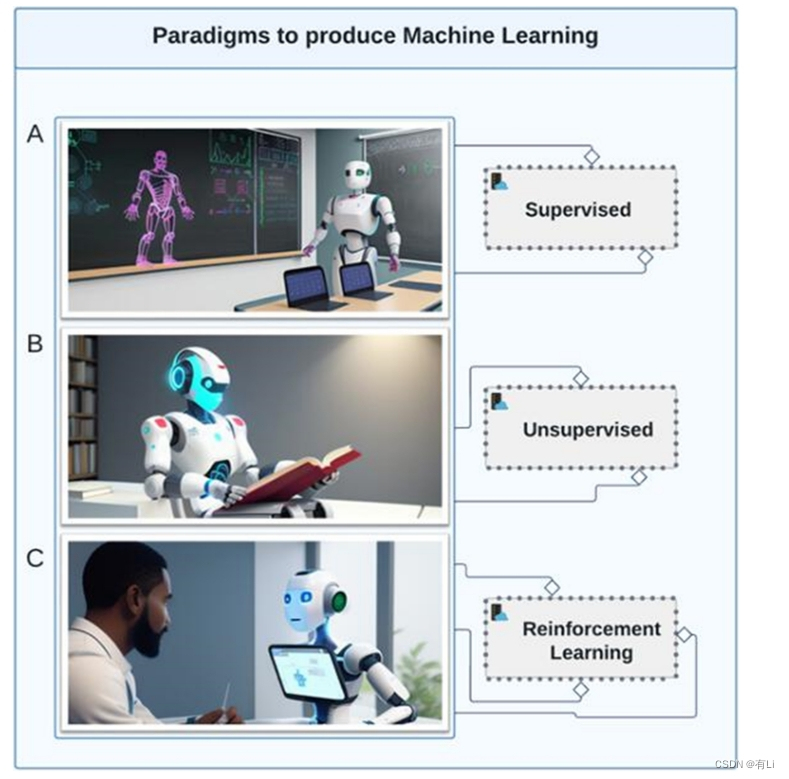
Figure 8 Paradigms to produce machine learning.
图 8:生成机器学习的范式。
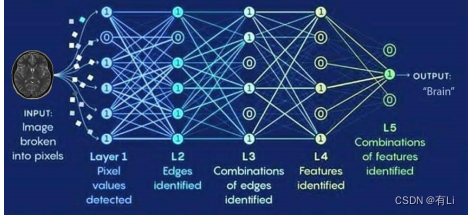
Figure 9 The base design of artificial neural networks. Animage is broken up into pixels and the brightness of each pixel
is fed into a digital neurone in layer 1 of the artificial neural network. The digital neurones are connected to layer 2 digital neurones, and if a certain threshold of activation occurs, the
layer 2 neurone activates as well, which then leads onwards to layer 3 and layer 4. The amount of activation needed to activate the next layer is called the ‘model weights’ and these weights are generated through a process similar to long-term
potentiation in biological neurones (following the HebbianRule). Each layer then produces an abstraction of the preceding
layer, such that lines and edges are captured, followed bywhole shapes and polygons, finally ending in an output layer.
图 9:人工神经网络的基础设计。图像被分解成像素,每个像素的亮度输入到人工神经网络第一层的一个数字神经元中。这些数字神经元与第二层的数字神经元相连,如果发生一定阈值的激活,第二层神经元也会激活,进而导向第三层和第四层。激活下一层所需的激活量称为“模型权重”,这些权重通过类似于生物神经元中的长期增强过程生成(遵循赫布规则)。每一层都产生前一层的抽象,如捕捉线条和边缘,随后是完整形状和多边形,最终在输出层结束。
Table
表
第四层。激活下一层所需的激活量称为“模型权重”,这些权重通过类似于生物神经元中的长期增强过程生成(遵循赫布规则)。每一层都产生前一层的抽象,如捕捉线条和边缘,随后是完整形状和多边形,最终在输出层结束。**
Table
表
